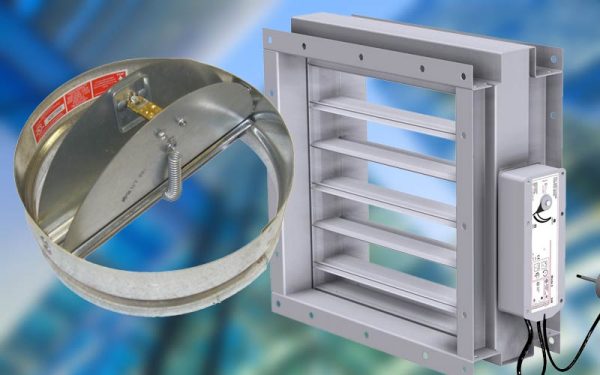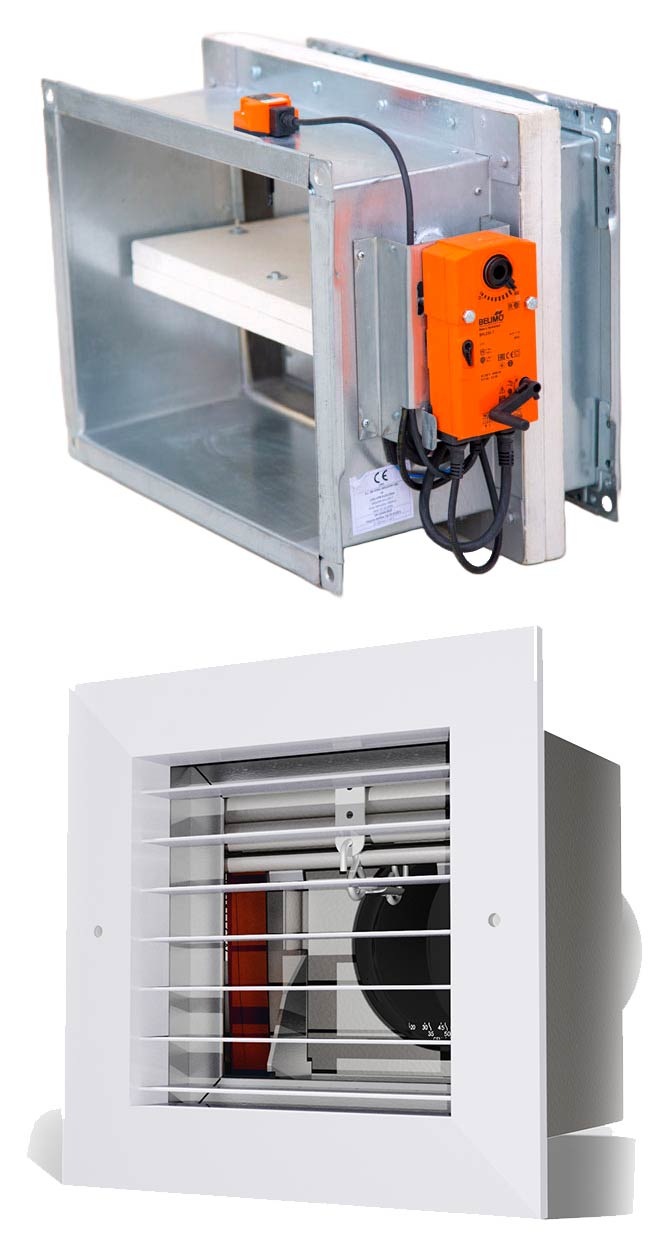
Fire Safety
Services
For your business and your wellbeing
Fire Damper Testing and Inspection
Fire Safety Services provided by Concept Environmental Solutions Limited
BS9999:2017 provides best practice framework for Fire safety and includes standards for the definition, maintenance and testing of Fire Dampers. It states that “All fire dampers should be tested by a competent person at regular intervals not exceeding one year, and to be repaired or replaced immediately if found to be faulty”.
A fire damper is built in to the Ventilation system and is designed to shut off the route through which fire can spread through the ducting, between fire compartments.
Fire dampers come in a variety of shapes and sizes. Mainly they are spring loaded and manual, however there are plenty of more modern examples that are electronically controlled and integrated in to the Building Management System (BMS).
BESA VH001 is considered one of the best publications on the subject, and we follow their guidelines when providing Testing, Inspection and Maintenance of Fire Dampers.
We see many clients coming to us as Fire Safety is becoming more thought about following the tragic events of Grenfell. Often Building Managers have no previous history or drawings for us to go from. If the site has multiple locations we will always recommend that the starting point is a Survey of the Fire Damper Assets. This can then be used to complete the testing.

Regulations
There are many regulations that govern the use, location, setting, design, maintenance and testing of fire dampers. These include BESA DW/144 Sheet Metail Ductwork, DW/145 Installation of Fire & Smoke Dampers, TR19 and TR19 Grease for cleanliness, HTM 03:01 Heating and Ventilation, HTM 05:01 Healthcare fire safety.
Testing and Maintenance will cover the following (and inline with manufacturer guidelines where available):
- An inventory of all dampers to be tested.
- All manually resettable dampers will be released to ensure the integrity of the sping loaded shutter. On motorised fire dampers the control mode should be operated to ensure that the blades are moving from the open to the closed position and vice versa.

- The fire damper should be locally activated (automated/electrical dampers) or released (mechanical) and reset to the correct position.
- A review of the previous inspection report to check if any modifications have been made and outstanding remedial actions have been completed.
- The fusible link should be inspected for any deformity or damage.
- Where accessibility allows, the fire/smoke damper must be cleaned in its entirety.
Once testing has been completed, a report will be compiled using the following as a guide:-
- Test results with client information including position within the building/system, date, name of operative shall be recorded and any comments noted if further action is required.
- Asset register to include damper location and ID number.
- Where the damper is not fully or only partially accessible due to inadequate access either in the ductwork or the building fabric it must be reported to the client and remedial action recommended.
- Inspection results including details of failed damper operation.
- Explanation of failed operation and recommended correction or remedial action
- If a fusible link has failed it should be reported to client who must take remedial action
- Any severe corrosion or damage found should be reported to the client
- If drawings are provided update and annotate details.
- Digital photographic evidence of damper condition prior to, during and after testing procedures unless otherwise specified by client.
- Visual assessment of fire stopping integrity and/or damage observed to immediate area of fire damper.
- Damper fixing should be checked where reasonably practicable and photographic evidence and commentary provided where there is a clear issue that require the client to take remedial action.

When was your system
last checked & tested?

Let us do your thinking on your behalf...
Everyone loves a ‘lightbulb moment’ and at Concept our aim is to come up with the ideas and the solutions so that our clients can focus on other areas in the knowledge that what we are doing is having a positive effect.
Water Treatment Plant & Mechanical Services
There are numerous reasons for needing to improve water quality be it for healthcare, aesthetics or improved performance of systems. Concept specialise in reverse osmosis, water softening, UV filtration and chemical dosing plants to help you achieve your goals as far as water quality is concerned.
Air Hygiene
The quality of the air we breathe is not always given the attention it deserves. We maintain internal building ventilation, extract & access systems and monitor indoor air quality
Legionella Awareness Training
Our online courses provide RoSPA accredited basic legionella training providing an excellent foundation for controlling legionnaires disease.
Water Hygiene &
Legionella Control
Prevent an outbreak of Legionella with analytical water services and control programmes. Prevention is better than cure! Every building no matter how big, how small, how simple, how complex, will require some sort of control programme to satisfy HSG274.
Tailored solutions for Fire Safety

